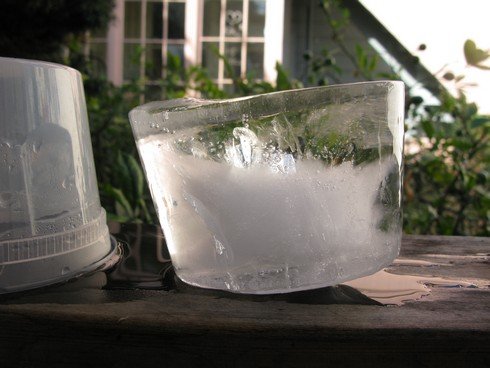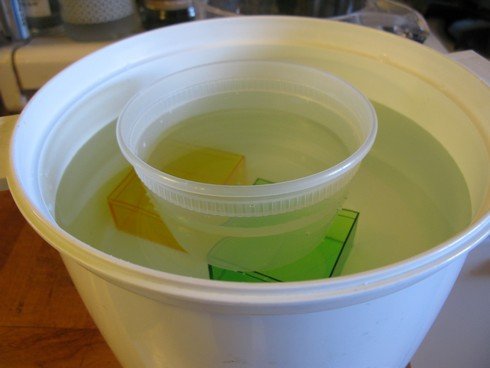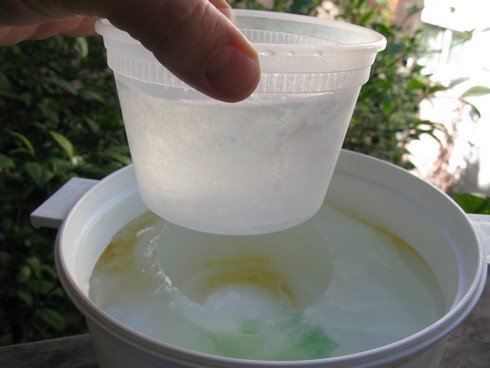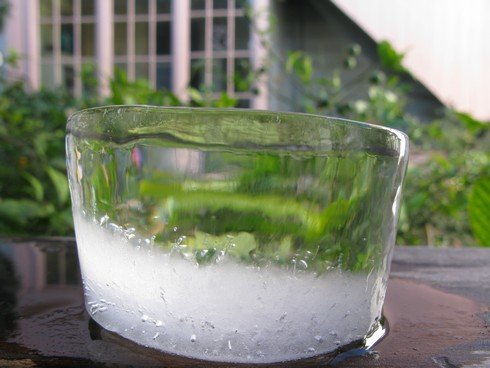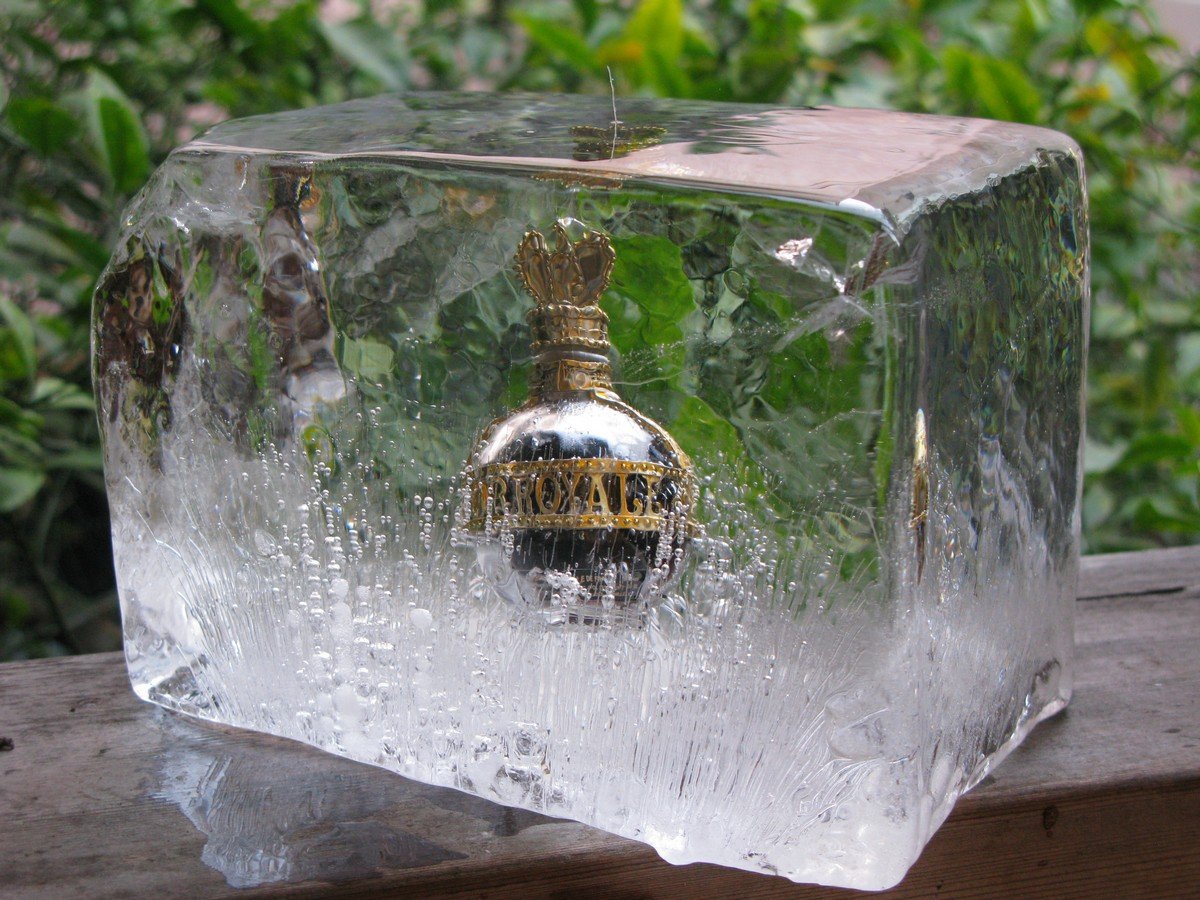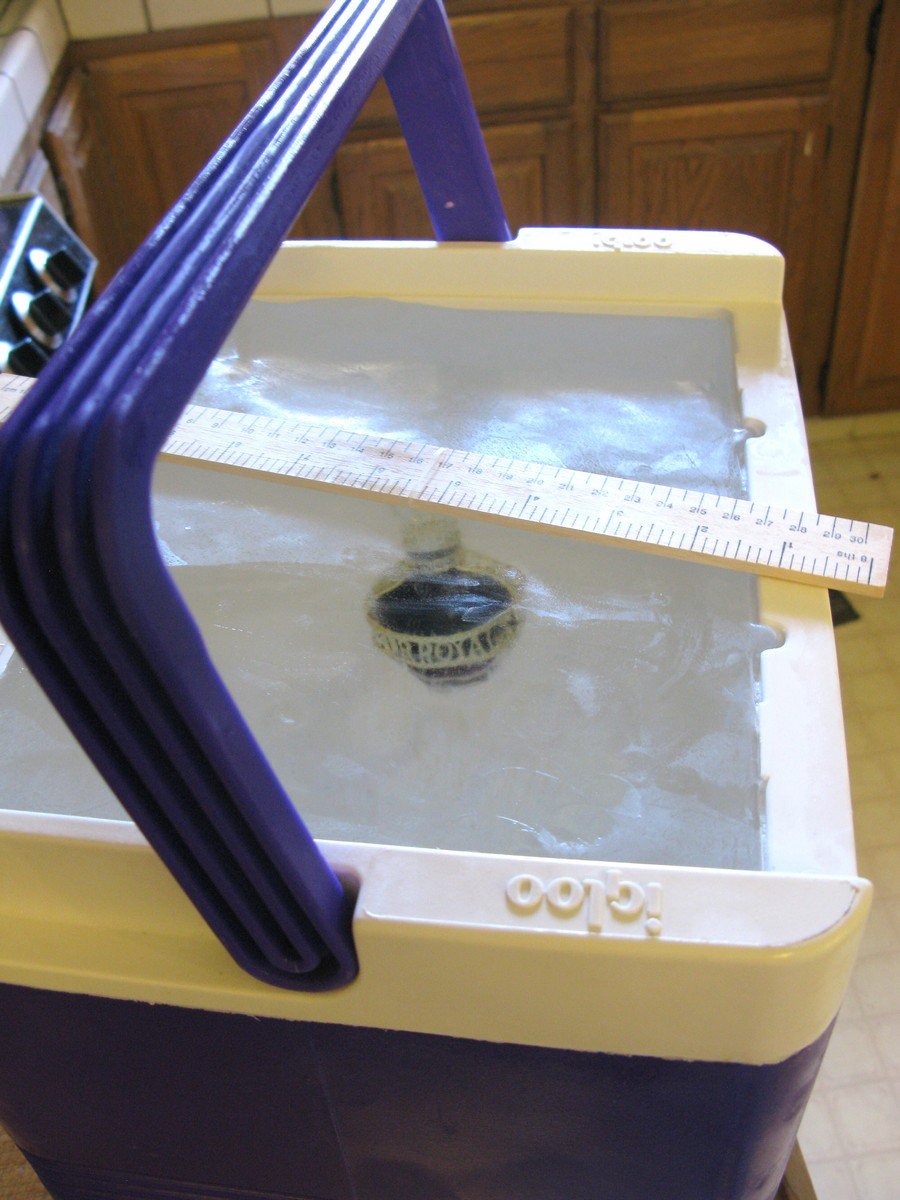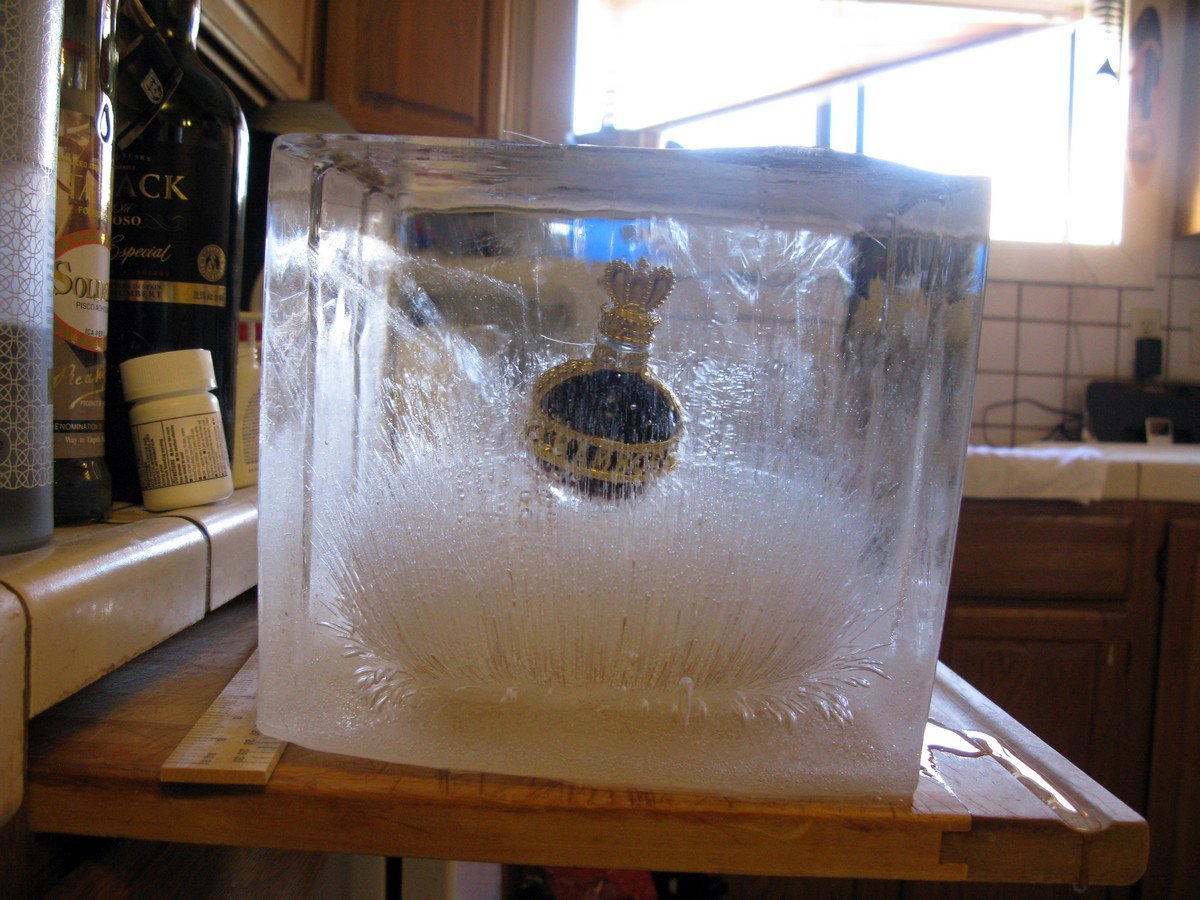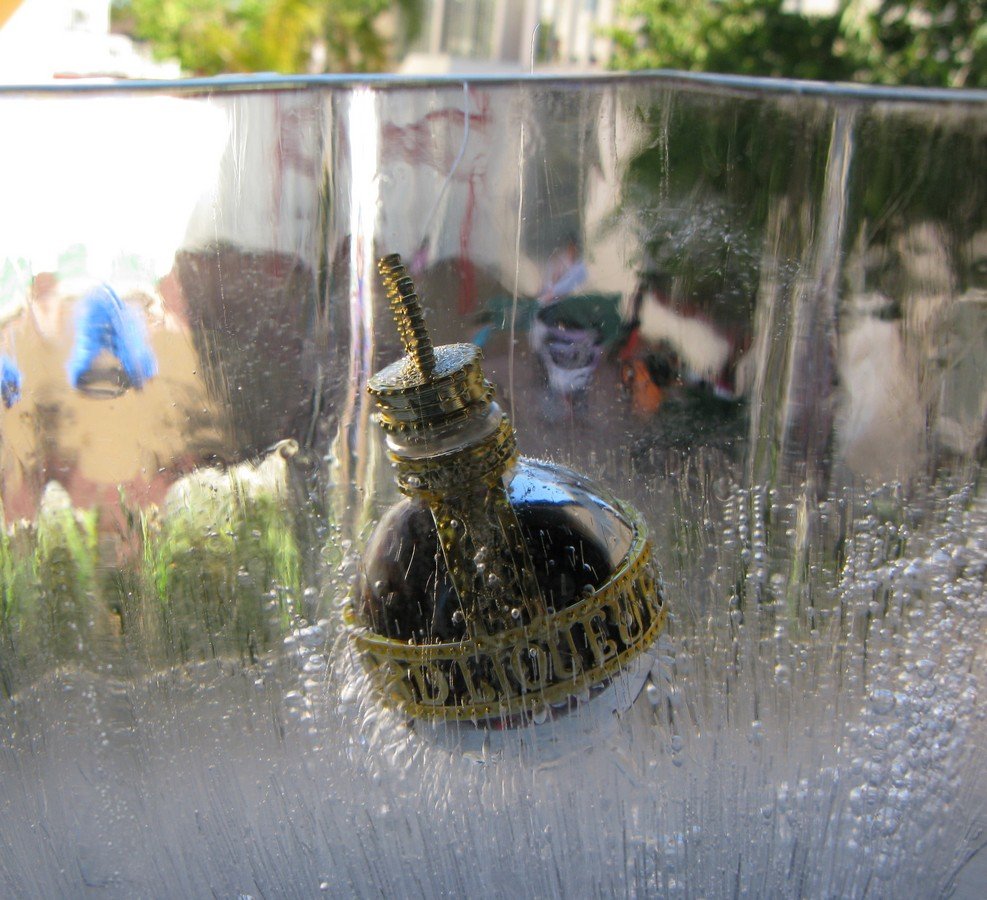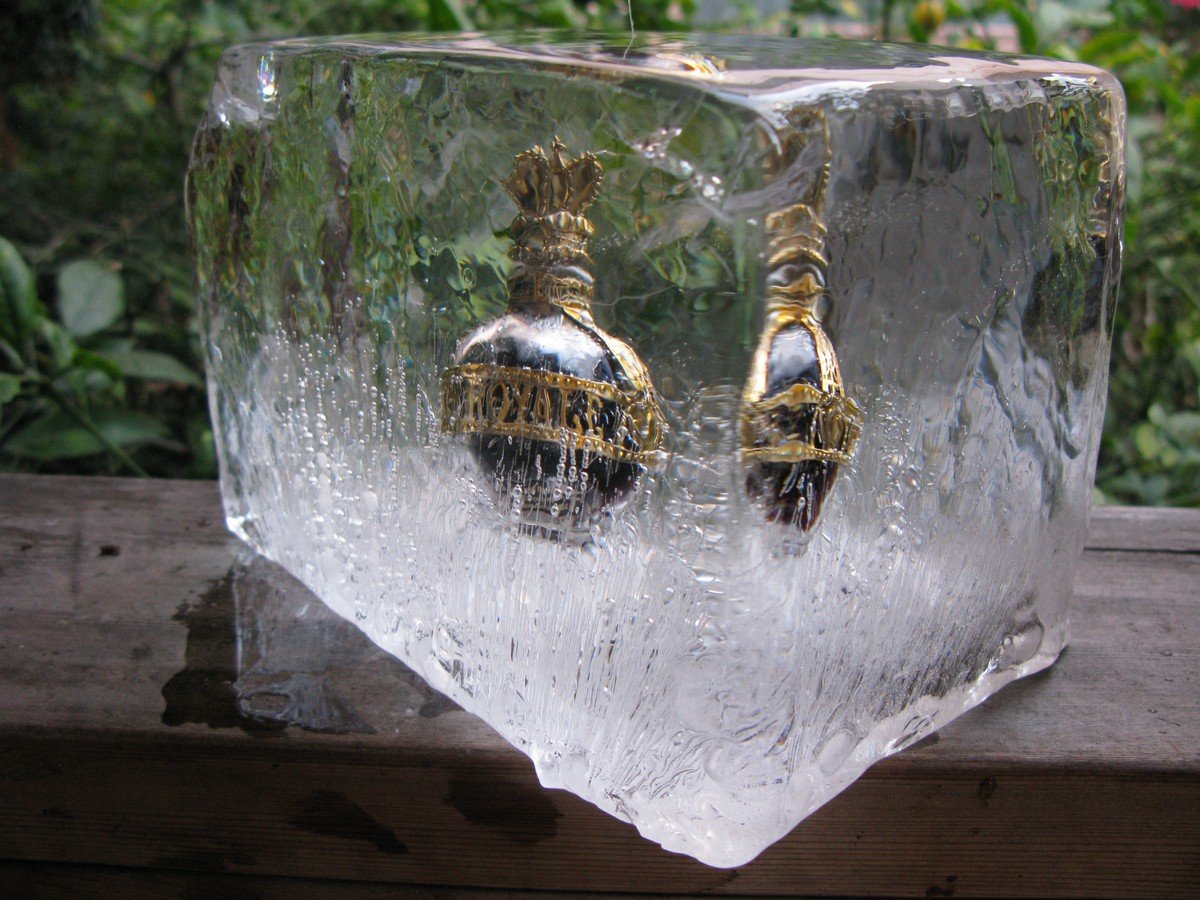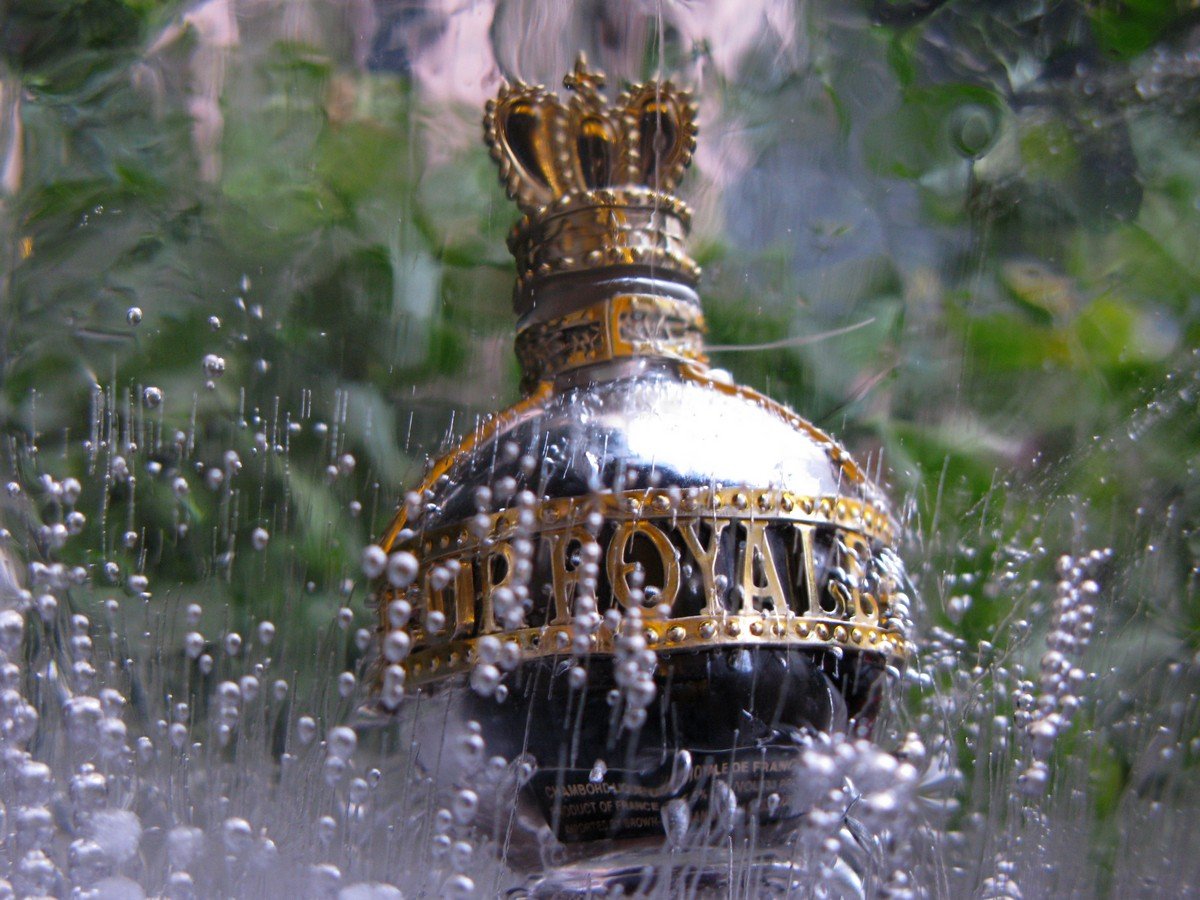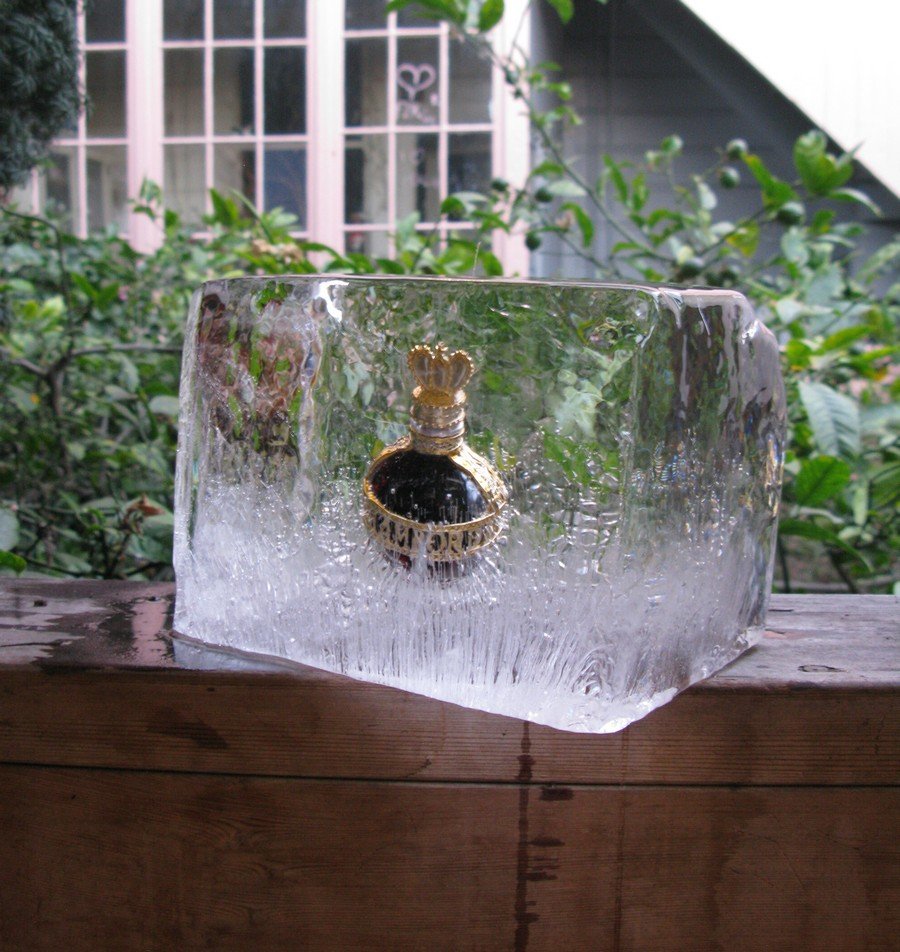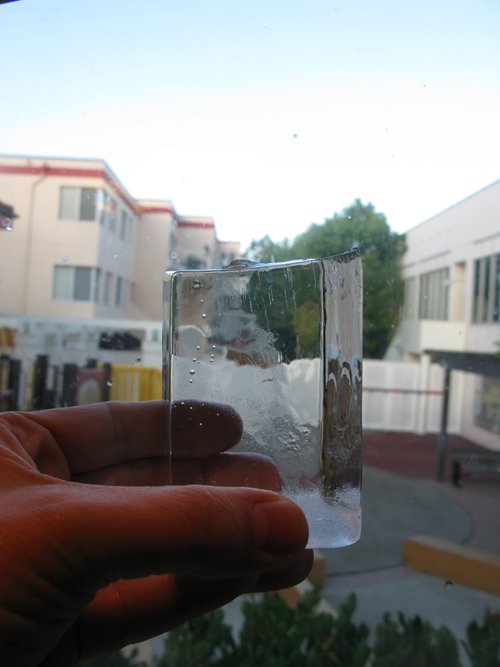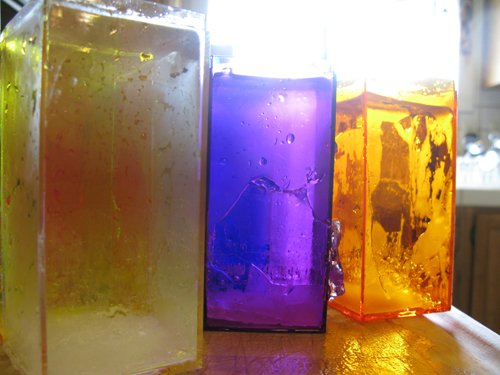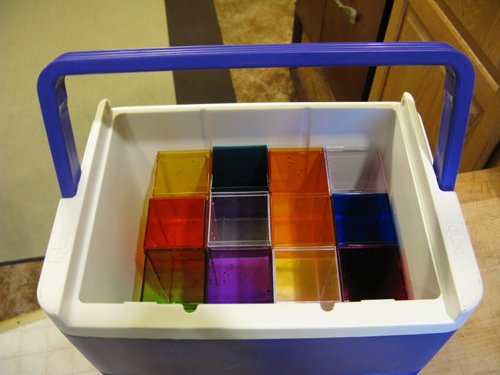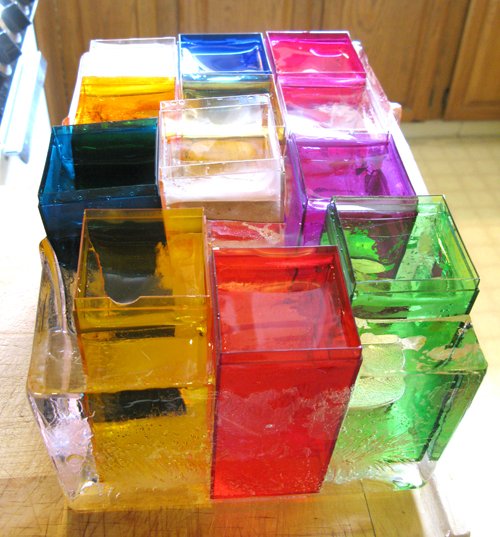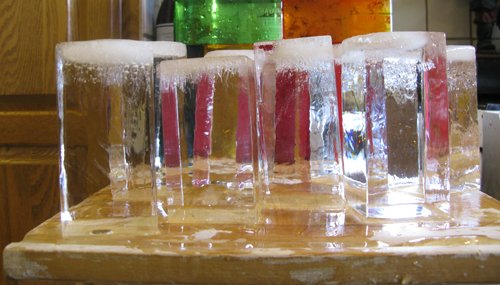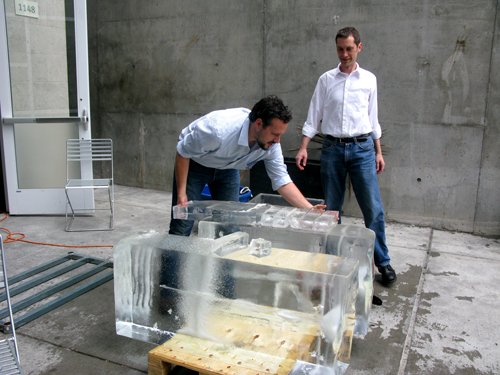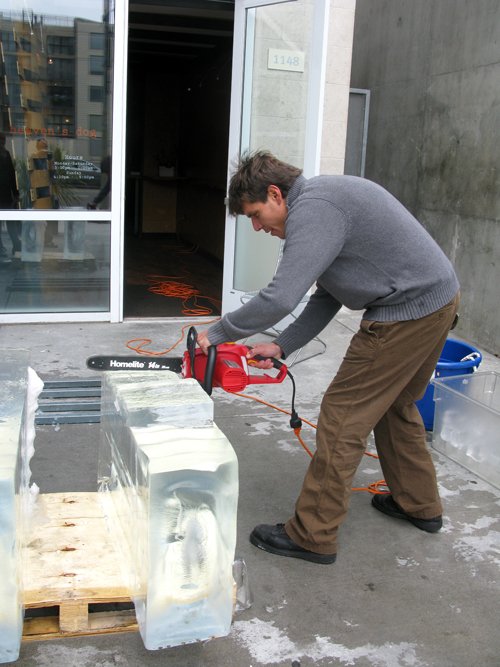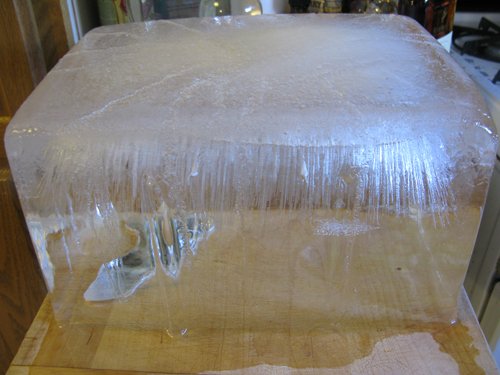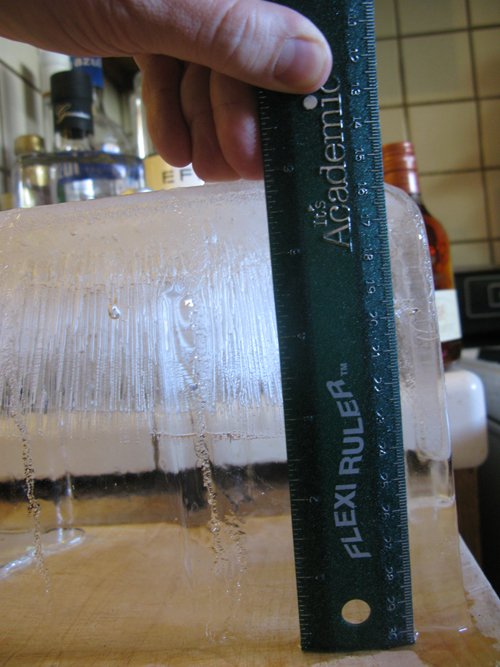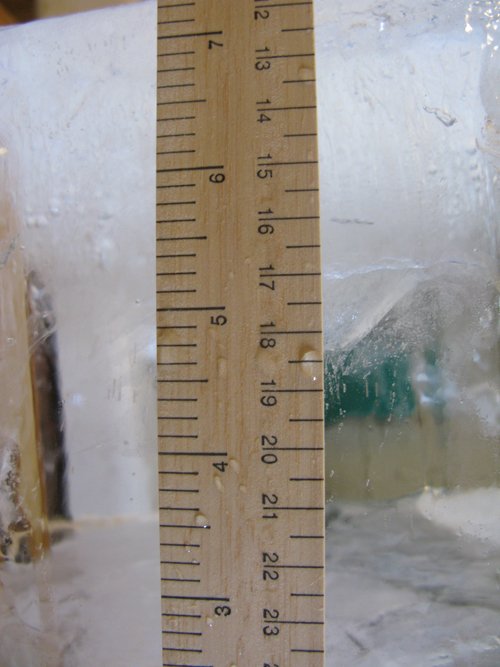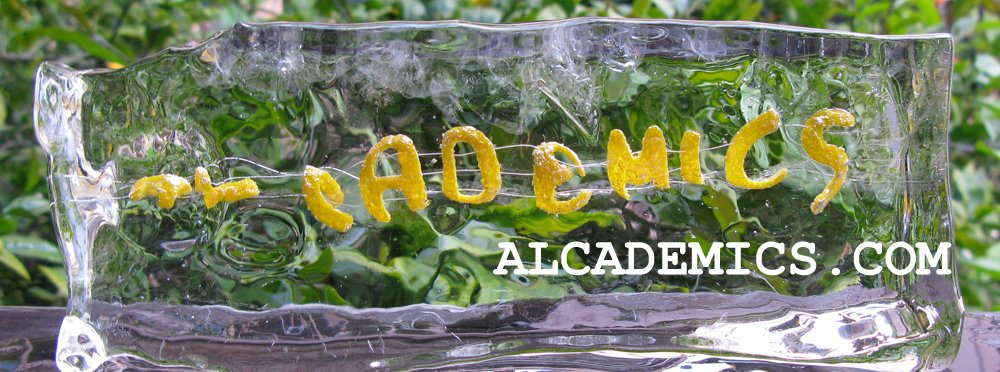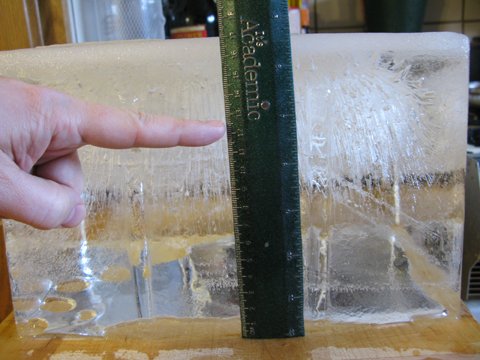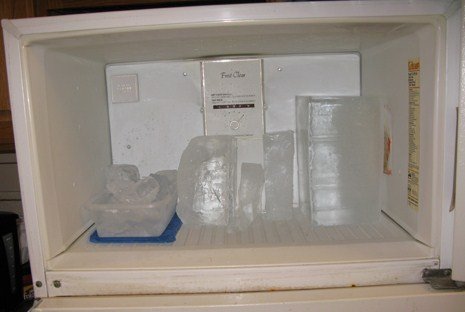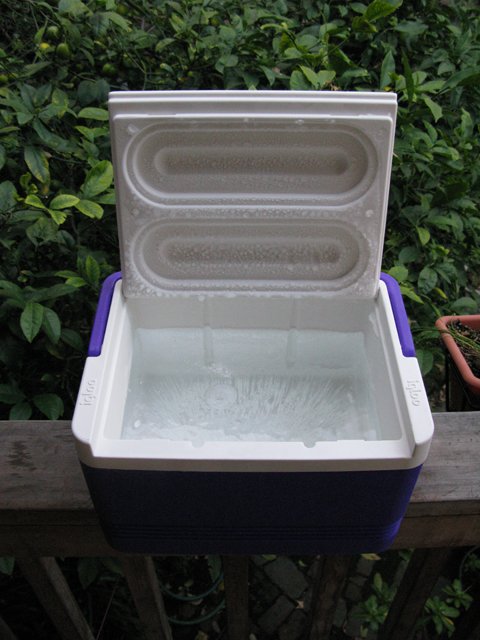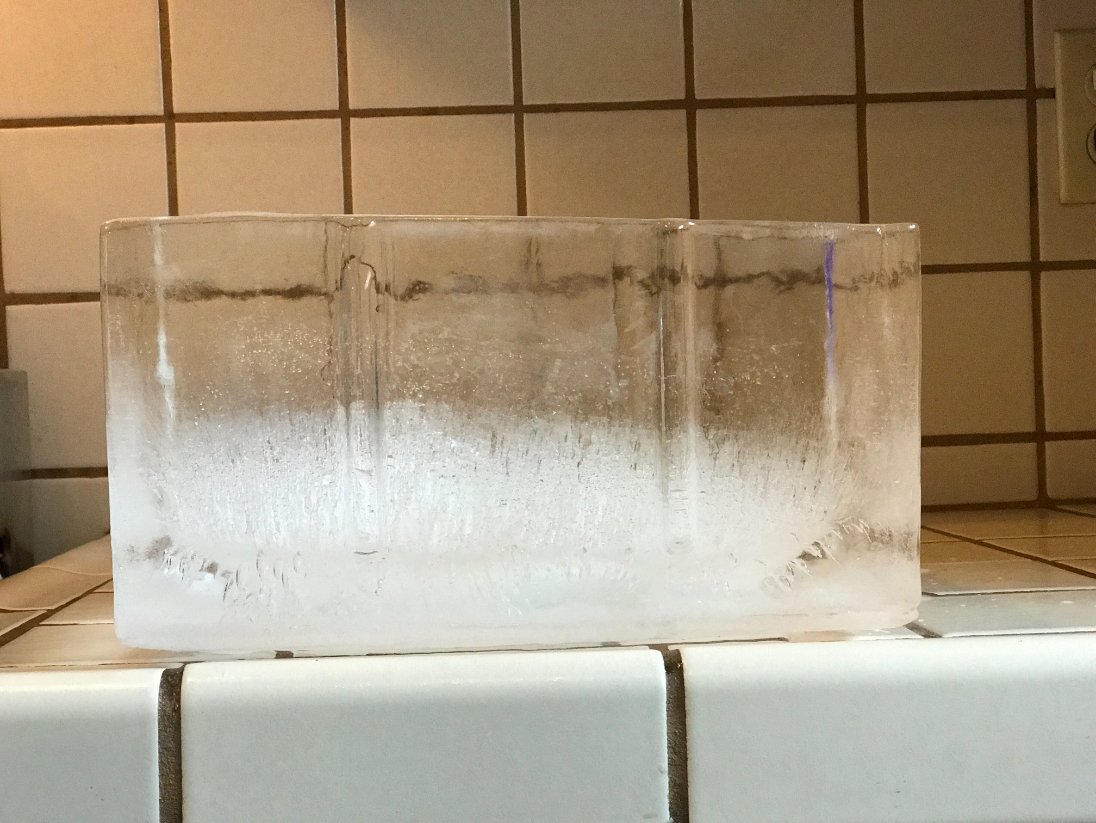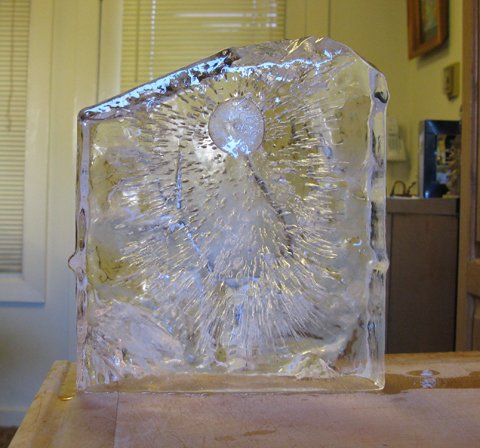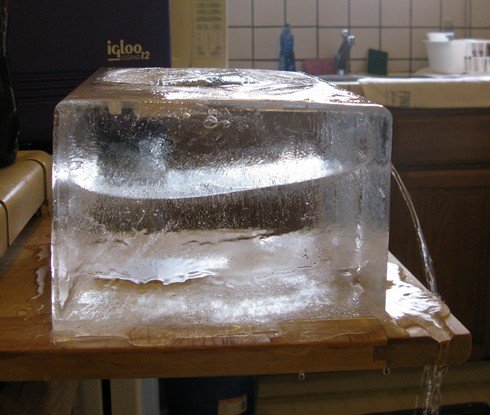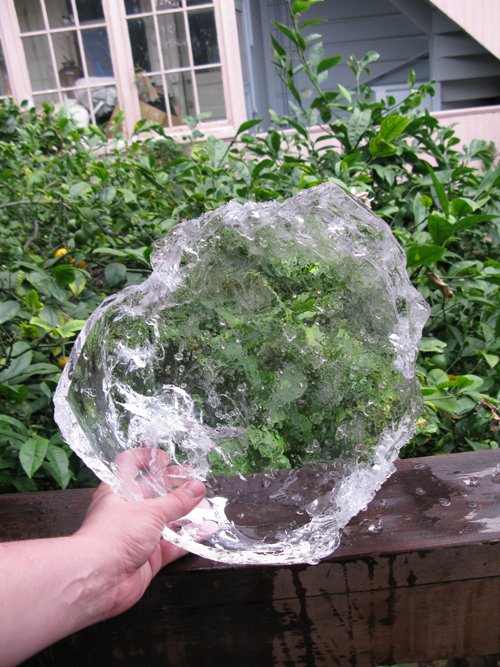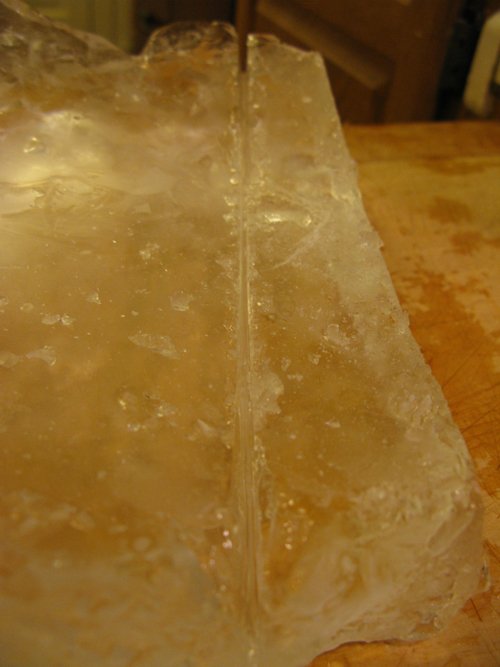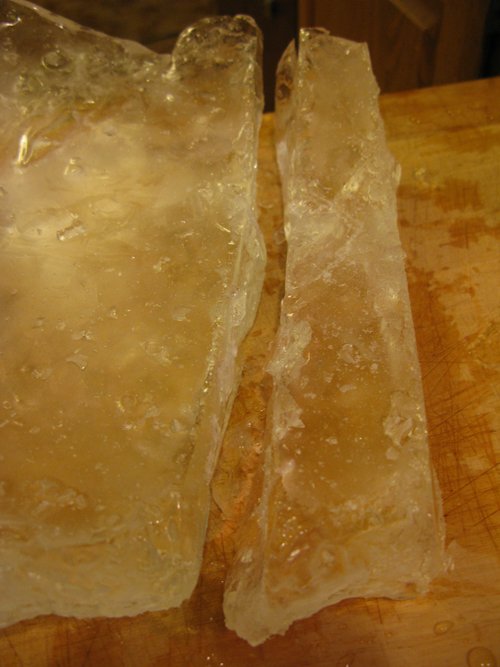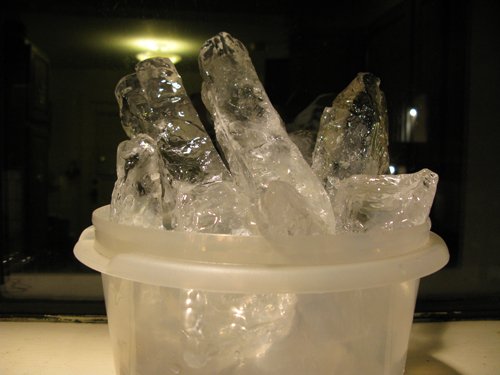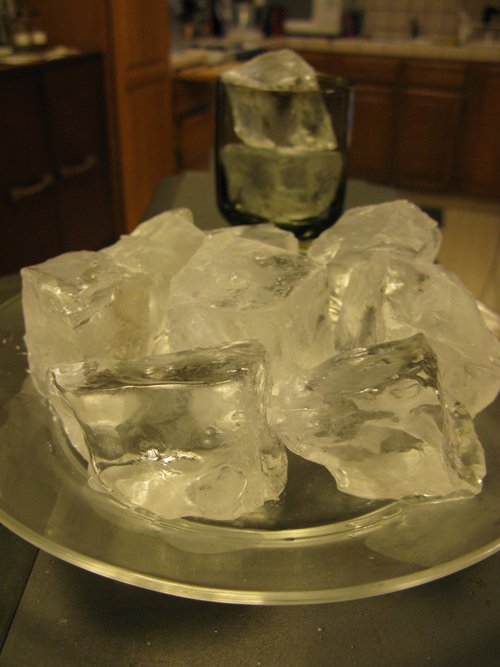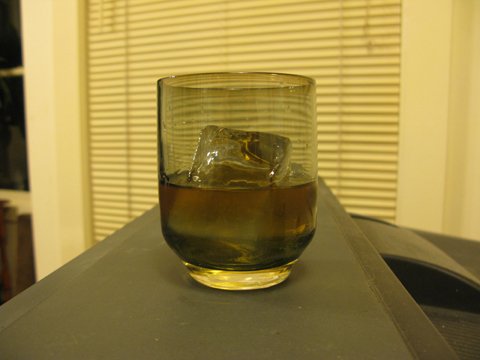In a set of experiments, I showed that you can make clear ice by controling the direction of freezing. The container I've been using for this is an Igloo cooler. When using it, the ice freezes from the top-down and all the cloudiness in the ice forms at the bottom of the container rather than in the middle of the block.
I wanted to show that you can do this without a cooler as long as you have some sort of insultation that accomplishes the same thing as the cooler. In this case, I chose a bigger pool of water as an insulator.
As a control I froze a plastic take-out container of water in the freezer.
As usual, it is cloudy over a large area, mostly in the center. This is because the water freezes from the outside-in. The last part of the ice to freeze contains air and any impurities, and is cloudy.
So then I took the same container and put it into a larger container. The smaller container sits on cubes to keep it off the bottom of the larger container.
Both containers were filled with water to about the same level. The purpose of this is to use the outer container of water as an insulator. The water inside the smaller container would then freeze only from the top-down instead of outside-in, because the water surrounding it would freeze later (because it is so big).
The results show that this worked- the cloudy part of the ice was the last part to freeze at the bottom of the container.
What this means:
- Directional freezing works as long as there is an insulated jacket around the container. The ice freezes only from the top-down, pushing the cloudy part to the bottom.
- This property could be exploited to make an ice cube tray that makes cloudy-on-the-bottom ice. Picture, for example, an ice cube tray that was insulated with a jacket on the sides and bottom.
- So now I can do more experiments to make an insultated jacket that is practical.
An index of all of the ice experiments on Alcademics can be found here.
